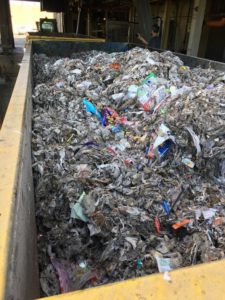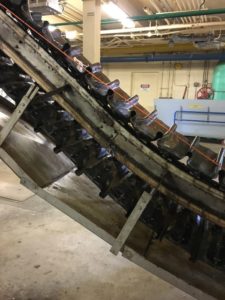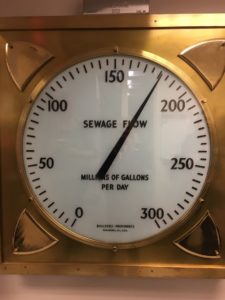No one wants to talk about it.
We’re often relying on decades to century-old technology.
And we are just barely getting by.
What am I referring to? Water and wastewater infrastructure.

Water and wastewater treatment have done more to improve human lives than just about anything doctors and medicine have done. In the U.S., the technology and construction of better water and wastewater treatment plants has tended to leap ahead in spurts. The systems currently protecting our health were largely built in a federally-funded burst in the 1970s-1980s but there are operating plants much older.
Treatment plants do not last forever. Like a car with 300,000 miles, it may still run but you know it is going to let you down someday — and possibly soon — at the least convenient time. The systems we rely on today were built by our parents and grandparents. It is now time to systematically renew or upgrade them for the challenges of today.
Today’s maintenance and upgrade work will be used by our children and grandchildren. Minnesota has legislated that utilities operate and maintain their systems — subject to local willpower — and has provided a safety net of low-interest loans to assist communities where the population cannot fully fund operations or replacement.
This year’s bonding proposal from Governor Walz includes these low-interest loans, a key initiative in addressing affordability. However, many communities struggle to accept another loan because, like the lure of low-interest credit card offers, the reality is that the payments must still be made. Balancing affordable water rates while modernizing treatment is a tricky tightrope to walk.
Updating historic systems for today’s challenges and opportunities
Water treatment technology has evolved over the years and the plants we rely on today largely were built to treat pollutants of the past. Society flushes a lot of new things into our sewers and raw water supplies since that time, and some of it is gumming up the works, literally. For example, dumpster loads of so-called “flushable wipes” must be removed and landfilled before they become entangled in the primary conveyor systems (please just throw them away and save everyone a step if you must use them).


But some of the things that we flush can’t be seen and are not removed by treatment. These include the chemicals we put on an in our body: personal care products and pharmaceuticals.
We are all drinking trace amounts of the medicine cabinet contents of our upstream neighbors. Some communities are beginning to explore removing these chemicals before people ingest them. But what level is safe?
We can measure pollutants to a much finer degree now and “safe” water means something quite different from when the last burst of treatment plants were upgraded in the 1980s.
Waste streams also provide opportunities for resource recovery. During a typical day 180 million gallons of sewage is processed at the Pig’s Eye Waste Treatment Plant, which treats water for the entire metro area. Imagine the energy and raw materials that could pulled from this wastewater stream before it is returned to the river.
Treatment plants of the future should be designed as part of a circular economy — recycling water, thermal energy, metals, nutrients and other chemicals that are deleterious to the waste stream but beneficial to other parts of the economy.

The time for Minnesota to invest in the next generation of water and wastewater treatment plants is now. We should invite innovation, decentralized systems, and plants that recover benefits from wastewater while returning cleaner water to our rivers.
We applaud the inclusion of funding for wastewater treatment plant upgrades in the Governor’s bonding bill proposal. Let’s put that money to good use and prepare Minnesota’s infrastructure for the task of managing tomorrow’s challenges.
— Carrie Jennings, Freshwater Research and Policy Director